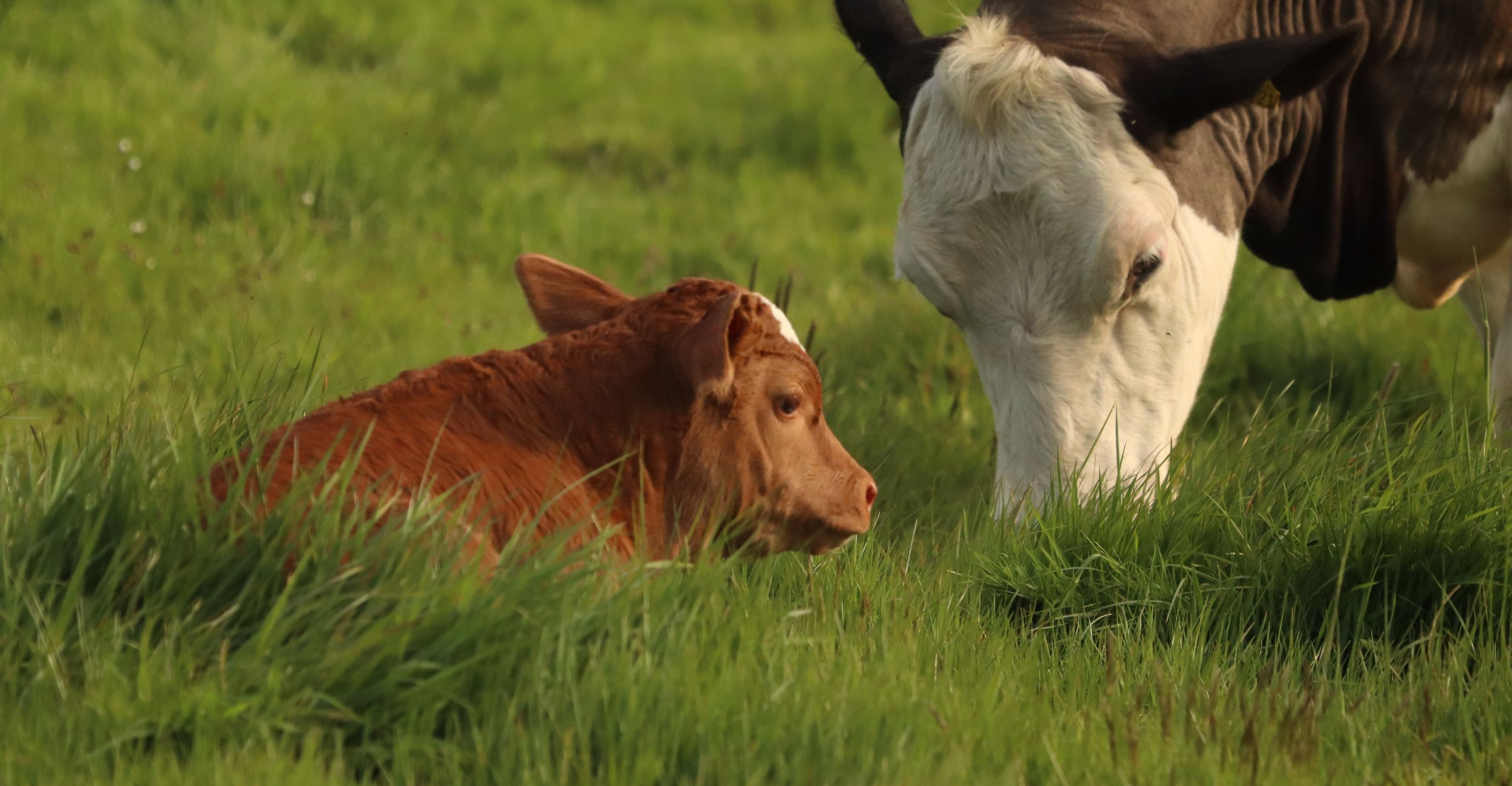
Veterinary Viewpoints: Understanding Lumpy Jaw
Tuesday, July 8, 2025
Media Contact: Kinsey Reed | Communications Specialist | 405-744-6740 | kinsey.reed@okstate.edu
Lumpy jaw, or actinomycosis, is a long-lasting bacterial infection in cattle caused by Actinomyces bovis.
This bacterium normally lives in the mouths of healthy animals without causing harm. However, it can cause problems if it gets into deeper tissues through small openings or punctures inside the mouth. These injuries are often caused by rough or stemmy feeds, sharp plants like foxtails or thorns, or existing dental issues. Once inside the tissues or bone, usually in the lower jaw, the bacteria trigger a slow reaction that leads to thickening and new bone growth, creating the firm swelling known as lumpy jaw.
The earliest and most recognizable sign of lumpy jaw is a hard, immovable swelling along the side of the lower jaw, particularly along the horizontal portion (Picture 1a). At first, this lump is usually painless and does not drain. Over time, however, draining tracts may develop and open to the skin's surface (Picture 1b). These fistulas intermittently leak pus, often containing small yellow 1-2 mm particles known as "sulfur granules". As the condition worsens, affected animals may begin to show signs of discomfort when eating, such as dropping feed or reduced appetite. Weight loss may follow, especially in more advanced cases, as chewing becomes increasingly difficult.
Diagnosis of lumpy jaw is typically based on a thorough physical examination and evaluation of the animal’s clinical signs. In cases where draining tracts are present, veterinarians can collect a sample of the discharge and examine it under a microscope to confirm the diagnosis. If the case is more complex, X-rays may be used to assess the extent of bone involvement and to differentiate lumpy jaw from other conditions, such as tooth root abscesses, fractures, or tumors.
The treatment of lumpy jaw focuses on stopping the progression of the infection rather than eliminating the existing bony mass. In early stages, medical therapy may be effective in halting further development of the lesion. In more advanced cases, particularly when there is pus drainage, a more intensive treatment approach is usually necessary. While the size of the mass typically does not shrink significantly with treatment, successful intervention can often stop its growth and improve the animal’s comfort and ability to eat. The prognosis is good if treatment begins before significant damage has occurred.
Lumpy jaw can cause serious problems for individual cattle by making it difficult for them to chew and gain weight. Since the bacteria that cause lumpy jaw normally live in the mouths of healthy cattle, there is no way to prevent the disease completely. However, the chances of infection can be lowered by avoiding dry, coarse, or stemmy feed and by keeping animals away from plants with thorns or foxtails. If a cow develops a hard swelling on the jaw, with or without draining pus, it’s important to contact a veterinarian right away to confirm the diagnosis and begin treatment. Catching the disease early gives the best chance for slowing or stopping its progression.
Written by Dr. Melanie Boileau
Veterinary Viewpoints is provided by the faculty of the OSU Veterinary Medical Teaching Hospital. Certified by the American Animal Hospital Association, the hospital is open to the public providing routine and specialized care for all species, as well as emergency care. Call 405-744-7000 for an appointment or see more information at vetmed.okstate.edu.
